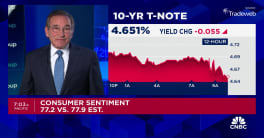Builder confidence in the market for single family homes slid 2 points again in February to a score of 65 on the National Association of Home Builders (NAHB)/Wells Fargo Housing Market Index (HMI). The index had backed off two points in January as well, after reaching a decades-long high of 69 in December.
Analysts had been expected an increase in the HMI this month. Those surveyed by Econoday had an average expectation of 68 for the index.
NAHB Chairman Granger MacDonald said, "While builders remain optimistic, we are seeing the numbers settling back into a normal range. Regulatory burdens remain a major challenge to our industry, and NAHB looks forward to working with the new Congress and administration to help alleviate some of the pressures that are holding small businesses back and making homes less affordable."
The HMI is derived from a monthly survey NAHB conducts among its new home builder members. Builders are asked to provide their perceptions of current single-family home sales and sales expectations for the next six months as "good," "fair" or "poor." They are also asked to rate traffic of prospective buyers as "high to very high," "average" or "low to very low." Scores for each component are then used to calculate a seasonally adjusted index where any number over 50 indicates that more builders view conditions as good than poor.
The decline in confidence was noted in all three components. Perceptions of current sales conditions dipped 1 point to 71 and the measure of expectations for sales over the next six months was down 3 points to 73. The measure of buyer traffic, which has significantly lagged the other two for many years and only recently crossed the 50 level for the first time since before the housing bubble, fell five points to 46.
"With much of the decline this month resulting from a decrease in buyer traffic, builders continue to struggle to minimize costs while dealing with supply side challenges such as a lack of developed lots and labor shortages," said NAHB Chief Economist Robert Dietz. "Despite these constraints, the overall housing market fundamentals remain strong and we expect to see continued growth this year as some of these concerns are addressed."
Looking at the three-month moving averages for regional HMI scores, the Northeast fell 2 points to 50 and the Midwest rose 1 point to 65. The South also dipped 1 point to 67 while the West held steady at 79 for the third month in a row.







